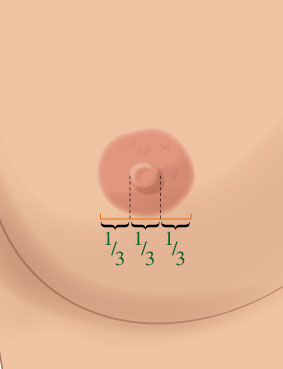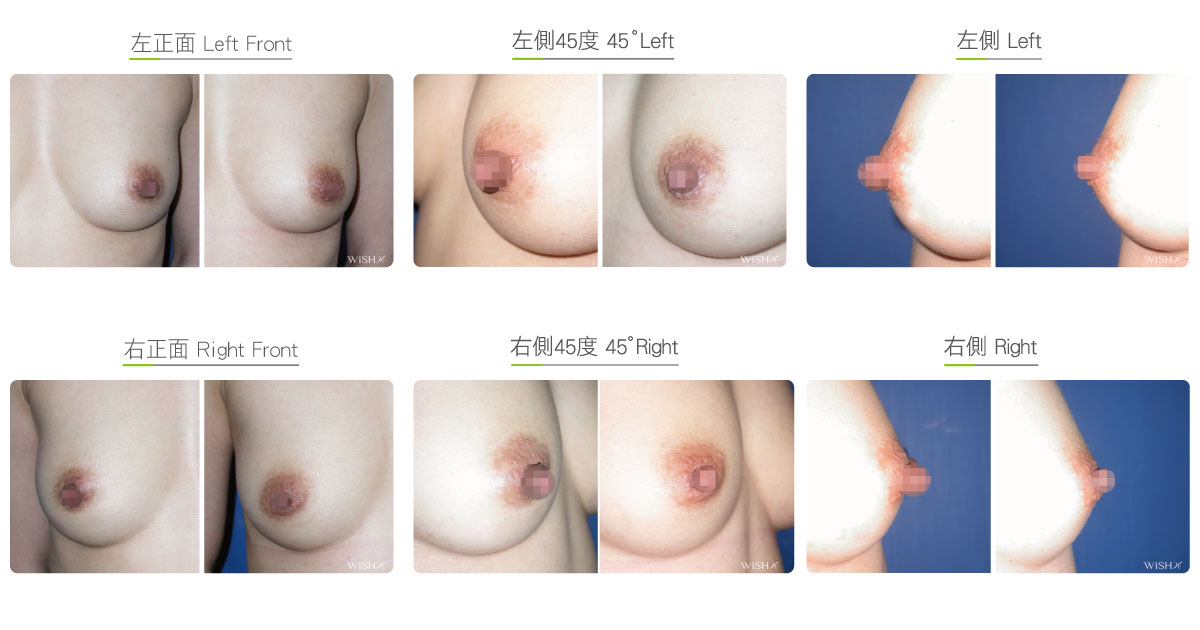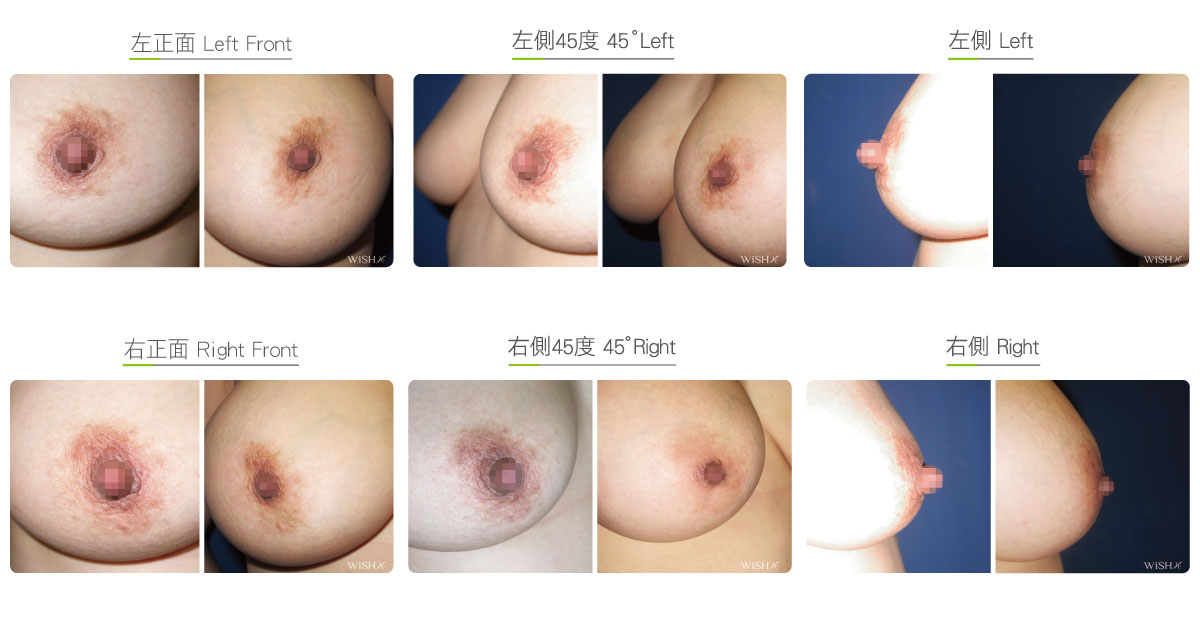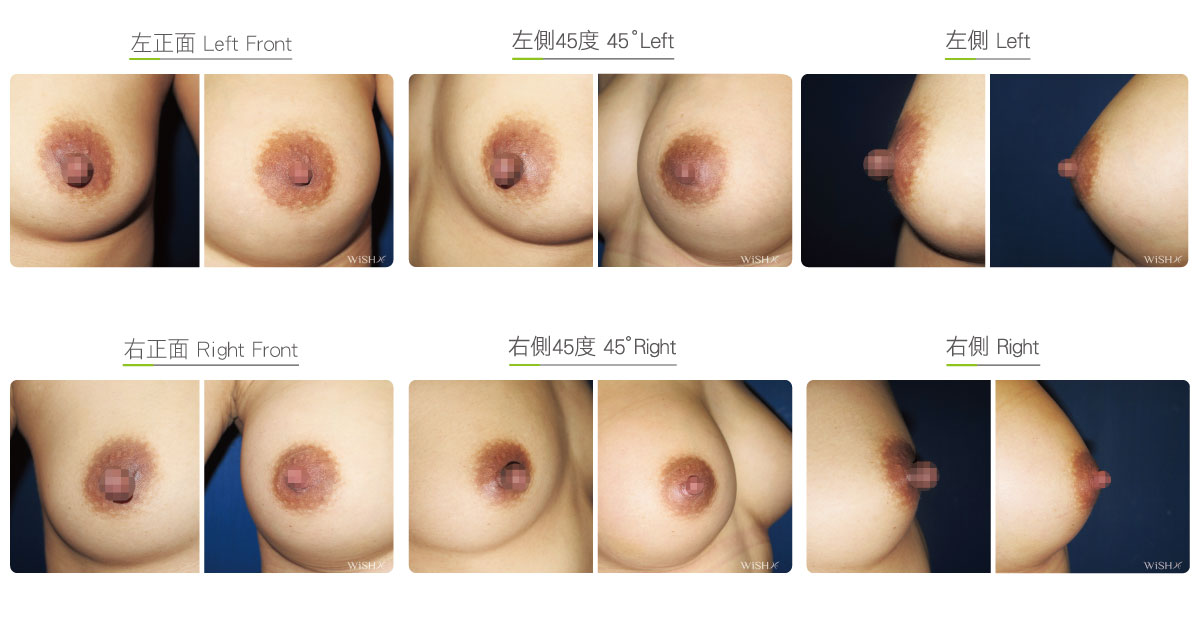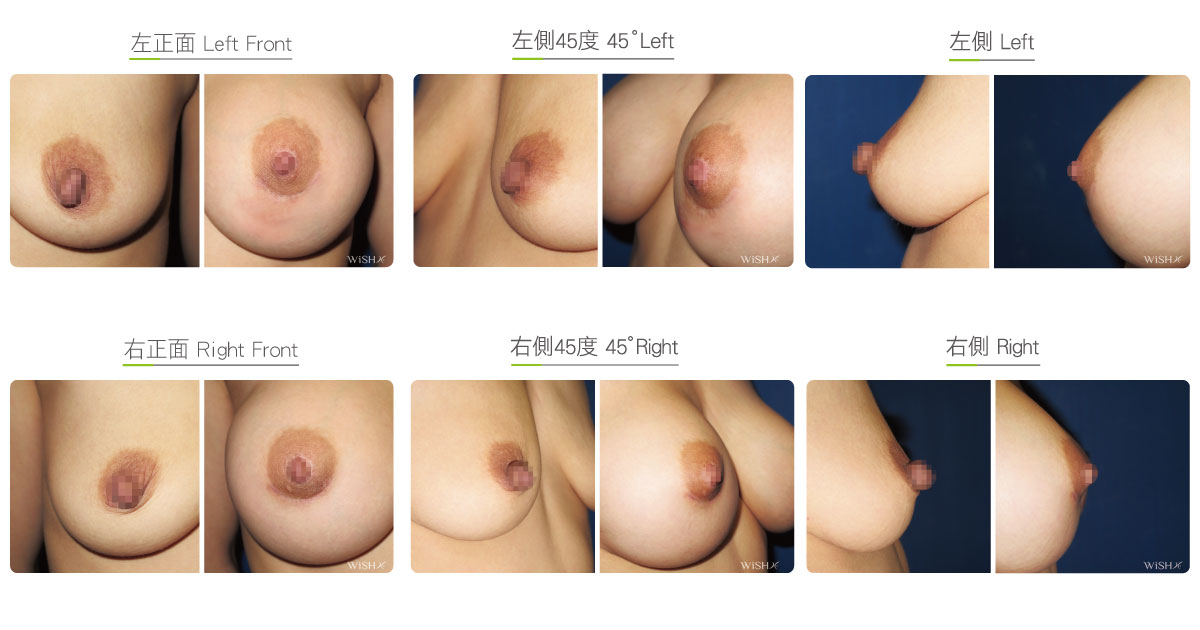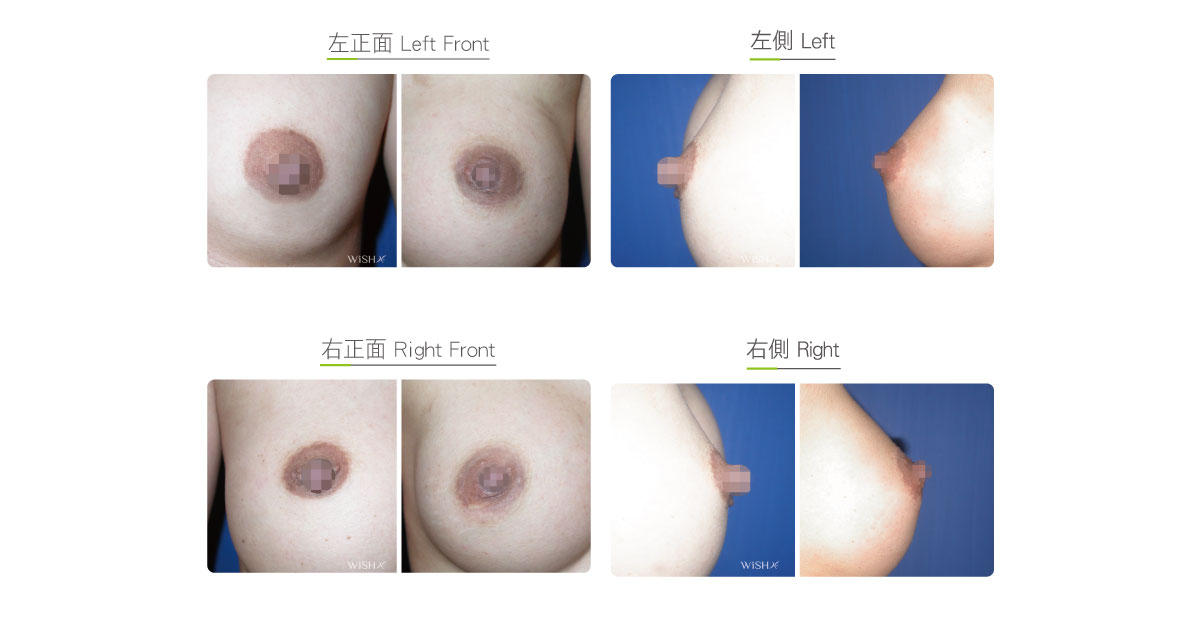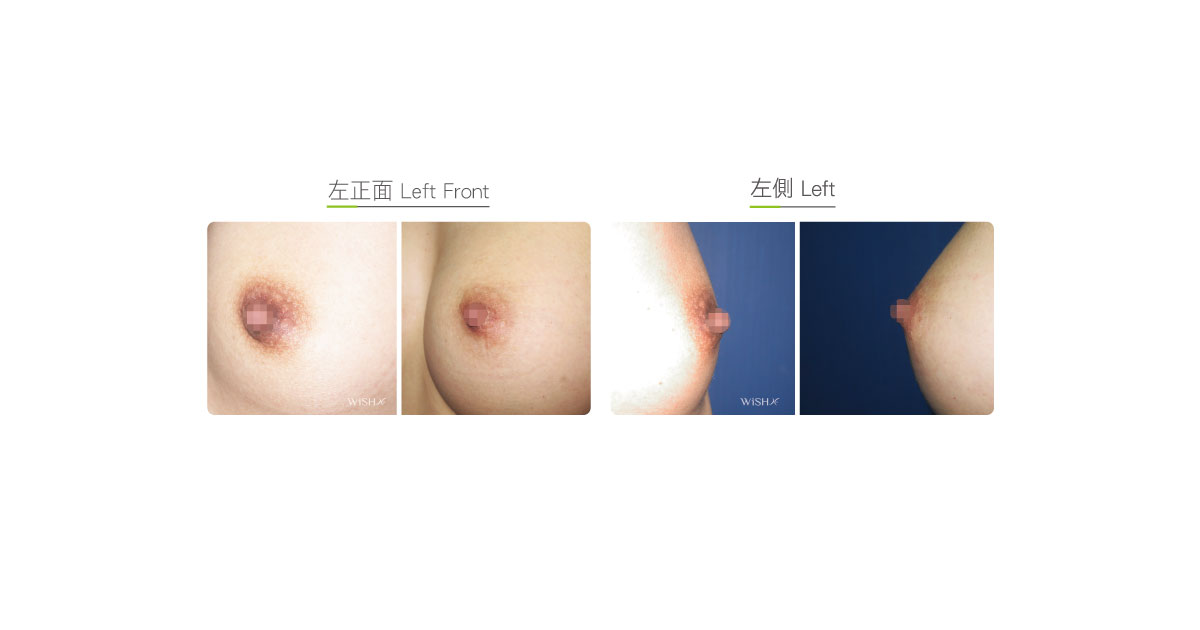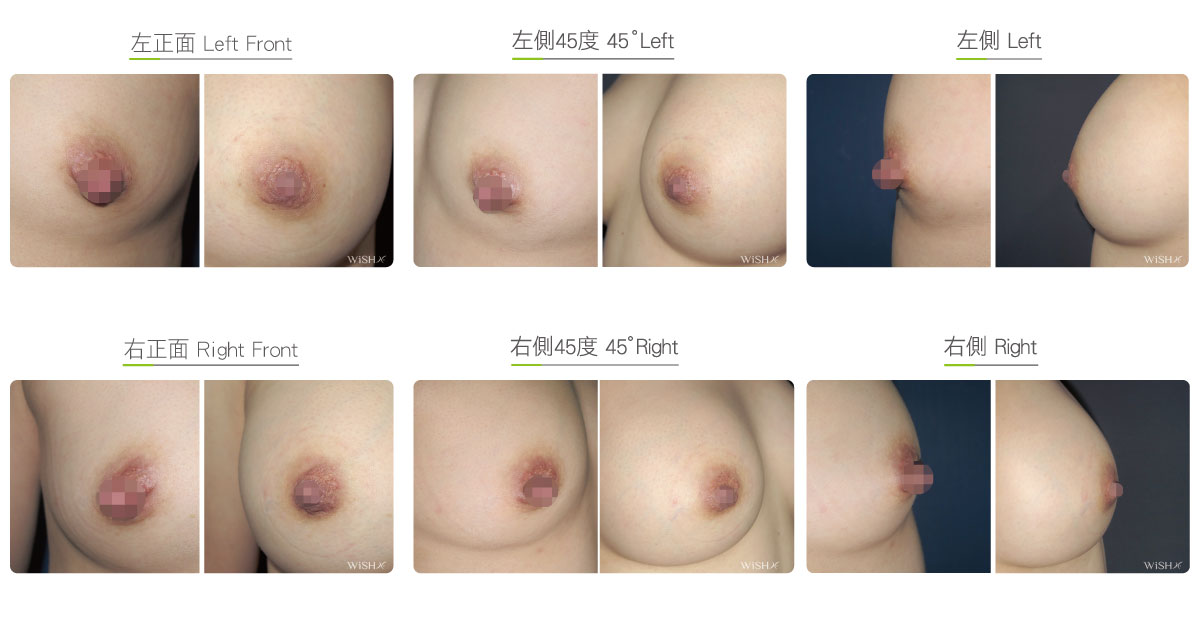Nipple Reduction
Although known as the most important secondary sexual characteristic, female nipples frequently become hypertrophic or elongated due to breastfeeding, aging, overstimulation, or genetic factors. Mild cases might affect appearance and confidence, but severe cases can cause troubles with clothing. Thus, nipple reduction and shortening should be taken into account for appropriate correction. The surgery involves two steps: first is reducing the frontal visual area of the nipples to change the size, and the second is decreasing the profile height to improve nipple length. Most patients would need to undergo both the above-mentioned steps to reach the perfect results, although in some mild cases, only one step is adequate.
Standard ratio of nipples to areola
Esthetic nipples are subject to specific calculation standards. Generally, the golden ratio is when the nipple and areola on both sides appear as trisections (1:1:1). In other words, it is perfect when the nipple is approximately one-third of the areola. Thus, nipple reduction should also follow this golden standard. At present, there are two common procedures of reducing the nipple surface area (size):
- It is a more common method of nipple reduction. This surgery excises two to three sagittal tissues on the lateral side of the breast and repairs the remaining tissue with stitches. It reduces nipple size by removing frontal–lateral tissues. This is a good surgery in that scars are not very visible from the front; this surgery does not affect nipple sensitivity or the ability to breastfeed. It is ideal for those who are single or who want to breastfeed in the future. However, the scale of reduction is limited by the condition of nipple blood circulation. In addition, the nipples would become long and slim after surgery, usually necessitating a nipple-shortening surgery for a more esthetic result.
- This method levels some tissues downward from the frontal apex and repairs with stitches. This surgery is fast with an unlimited scale of reduction. Nipple reduction and shortening can be performed through the same incision. However, a visible horizontal scar would be left at the front of the nipple. In addition, breastfeeding function and breast sensitivity would be affected. Thus, it is ideal only for patients with hypertrophic nipples after pregnancy or due to aging.
Lateral sagittal excision
To shorten nipple length, annular skin excision is performed at the border between the root of the nipples and areola (nipple base). Circulation between the mammary duct and blood can be maintained. Lastly, the two ends of the cutting skin are pulled together and re-stitched. By tension sutures, nipple height (length) can thus be effectively shortened. This surgery completely preserves the mammary ducts and affects breastfeeding. However, the degree of shortening is up to half the nipple height, and the nipples might grow a bit in the future. This surgery is often performed as a part of nipple reduction, along with lateral wedge resection.
Nipple Shortening
Complete Correction with Nipple Reduction and Shortening
Surgical conditions
Duration
- Type of anesthesia: IV sedation + local anesthesia
- Type of incision: Lateral sides and root of nipples
- Recovery: Immediate
- Removal of stitches: 7–10 days
General instructions
No food and water on the day of surgery
- Smoking and alcohol consumption for 3 months postoperatively and overstimulation of the nipples should be avoided.
- Tight clothes that could compress or rub the nipples should not be worn.
Ideal candidates
- Those with congenital hypertrophic or elongated nipples.
- Those with loose or hypertrophic nipples due to breastfeeding.
- Those with loose or ptotic nipples due to aging.
- Those with hypertrophic nipples due to overstimulation.
- Those with asymmetric nipples.
- Those who subjectively consider themselves to have large nipples.
Possible complications
- Nipple hypertrophy
- Poor nipple circulation
- Nipple atrophy
- Decreasing nipple sensitivity
- Visible scars
- Dysfunction in breastfeeding
Surgical advantages
-
Reduces both nipple size and length with effective results.
-
Reduces trouble with clothing due to protruding nipples.
-
Alleviates discomforts such as skin allergy or discomfort from rubbing.
-
Improves nipple appearance and self-confidence.
-
Helps with nipple color fading.
Surgical drawbacks
-
Frequent stimulation after surgery may cause nipple regrowth again.
-
Nipple sensitivity may be affected.
-
Those with darker nipples could leave a scar.
-
The degree of reduction is limited.
-
Breastfeeding may become more difficult in the future.

